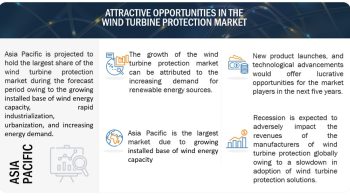
The global Artificial Lift Market growth is projected to be USD 9.0 billion by 2028, growing from USD 7.3 billion in 2023, at a CAGR of 4.4% during the forecast period. The need for the artificial lift method to optimize production and enhance the recovery rate from the mature wells owing to declining reservoir pressure and an increase in the global oil demand is driving the growth of the artificial lift market.
Artificial lift comprises techniques in the oil and gas sector to boost hydrocarbon production from wells with insufficient natural pressure. Employed when reservoir pressure is inadequate, methods like rod lift systems, electric submersible pumps, gas lift, and hydraulic pumping enhance flow rates. These mechanisms enable more efficient recovery, compensating for declining reservoir pressure and optimizing production in mature wells. The growing requirement to maximize the production potential of mature fields is one of the leading factors driving the growth of the Artificial Lift Market, as the demand for oil and gas is constantly growing. Digitalization and automation to enable better analysis of good conditions present promising opportunities for the Artificial Lift Market.
Download PDF Brochure: https://www.marketsandmarkets.com/pdfdownloadNew.asp?id=879
The artificial lift market is segmented into onshore and offshore. The offshore segment is expected to be the fastest growing market during the forecast period owing to the huge potential in the untapped oil and gas reserves in the offshore fields across countries such as US, Canada, and Mexico. Artificial lift methods such as hydraulic pumping, gas lift, electrical submersible pump (ESP), and progressive cavity pump (PCP) are most prominently used in offshore oil wells.
Horizontal drilling helps operators to access and produce hydrocarbons from low-permeability rock formations that would not be profitable with vertical wells in unconventional resources like shale and tight formations. Hence, the growing demand for horizontal drilling, which is likely to continue in shale formations, is expected to increase the demand for suitable artificial lift technologies.
Electric submersible pumps (ESPs) are expected to hold the second-largest market share in the artificial lift market during the forecast period. ESPs are usually used for offshore applications because of their ability to handle high-volume wells. The rise in offshore E&P activities is expected to drive the growth of the ESPs segment during the forecast period. The demand for ESPs is increasing due to the rise in operations in directional or horizontal wells in North America.
Request Sample Pages: https://www.marketsandmarkets.com/requestsampleNew.asp?id=879
North America is expected to be the largest Artificial Lift Market during the forecast period. The North American region comprises major economies such as US, Canada, and Mexico. The Artificial Lift Market in North America is primarily fueled by the robust infrastructure and thriving oil & gas sector. An accelerated surge in both upstream and downstream operations, coupled with a buoyant outlook for the oil & gas industry, forms the core drivers propelling the regional Artificial Lift Market. Notably, the share of horizontal wells surged from 5.4% in 2011 to 18.1% in 2021. The escalating presence of unconventional reserves like tight oil and shale gas stands as a key impetus behind the escalated demand for artificial lift solutions across the United States and Canada.
Some of the Leading players in the Artificial Lift Market are SLB (US), Baker Hughes Company (US), Halliburton (US), Weatherford (US), and ChampionX (US).


